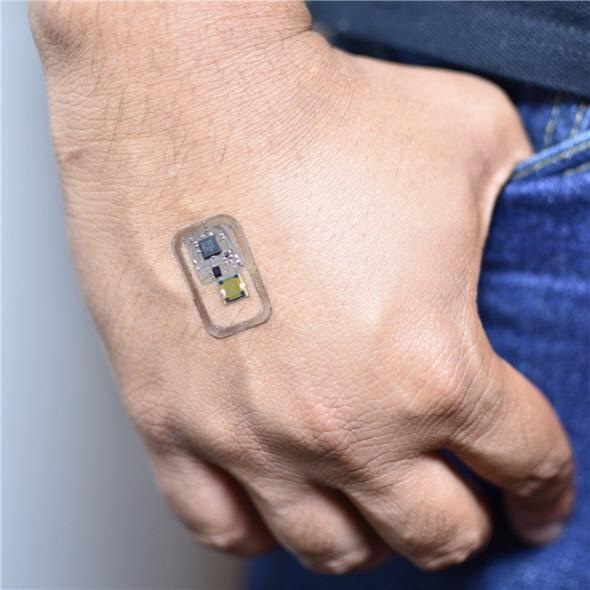A few studies have demonstrated that nicotine, a so-called addictive substance in electronic cigarettes, increases the threat of respiratory and cardiovascular disorders.
 This flexible nicotine sensor attaches to the skin, continuously measuring the wearer’s exposure. ACS Sensors 2021.
This flexible nicotine sensor attaches to the skin, continuously measuring the wearer’s exposure. ACS Sensors 2021.
However, to get complete insights into its possible health effects, there is a need to develop a real-time nicotine monitoring device. Also, such a device could help vapers — and non-vapers who face second-hand smoke — quantify their exposure. Scientists have now come up with a battery-free and wearable device that could execute this task. The device has been described in the journal ACS Sensors.
E-cigarettes are developed such that they heat and aerosolize a mixture of glycerine, nicotine, flavoring additives and propylene glycol, which the user then inhales. When this mixture enters the body, it can affect various organs, such as the respiratory system, where it modifies airflow, impairs immunity and raises oxidative stress.
Exposure to nicotine can also result in lung cancer. However, it has been difficult to evaluate that exposure under real-world conditions. Existing assays for quantifying ambient nicotine levels are performed under laboratory conditions and need huge sample volumes and sampling from days to weeks.
Although portable nicotine sensors are being designed as a substitute, they are not so useful since they depend either on sweat or sunlight to work. Thus, Madhu Bhaskaran, Md. Ataur Rahman and Philipp Gutruf designed a lightweight and wearable sensor that can detect nicotine in real-time and transmit the data wirelessly to electronic devices like a smartphone.
The researchers selected vanadium dioxide (VO2) on a polyimide substrate as the base for their sensor. They demonstrated that nicotine could bond covalently to a thin film of VO2, modifying the conductivity of the film to an extent that relies on nicotine concentration.
The device can detect the change in conductivity, perform signal amplification and send it wirelessly to a smartphone. Upon being applied to the skin, the battery-free sensor quantifies the wearer’s exposure to vaporized nicotine in the open air. According to the team, this method would help expand the use of wearable electronics for real-time tracking of dangerous substances in the surrounding.
The researchers acknowledge financial support from the Australian Research Council.
Journal Reference:
Rahman, A., et al. (2021) Nicotine Sensors for Wearable Battery-Free Monitoring of Vaping. ACS Sensors. doi.org/10.1021/acssensors.1c01633.